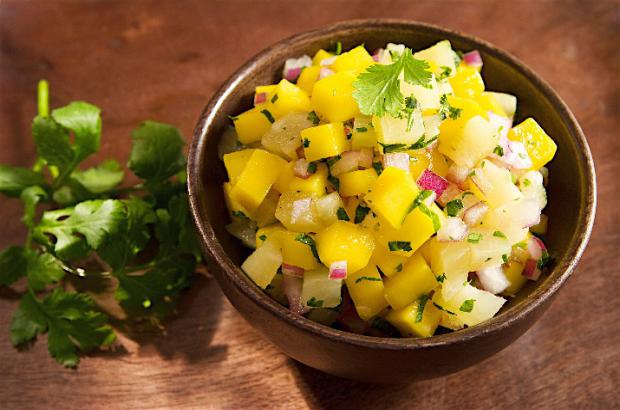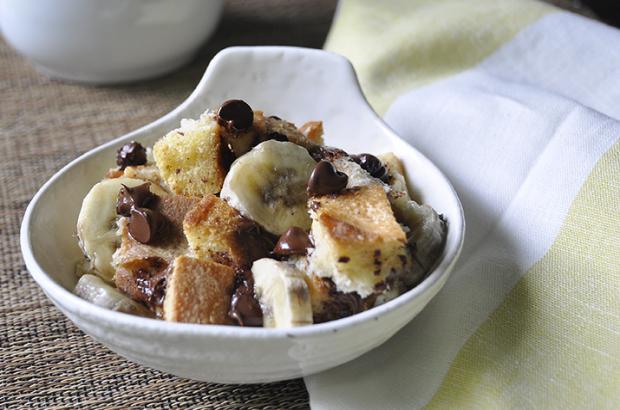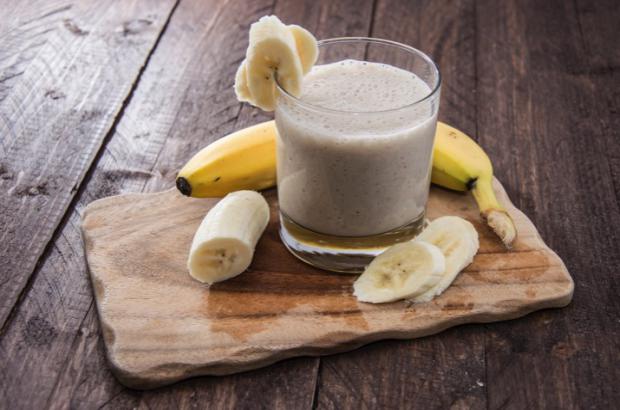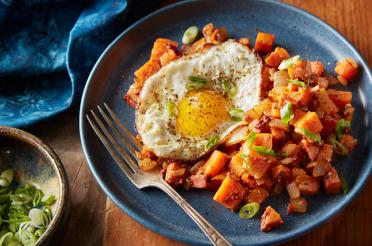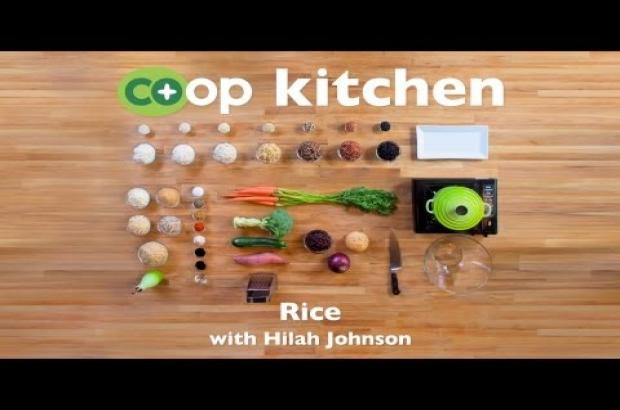Article
Bananas

It's probably no surprise that the banana is the most popular fresh fruit in the United States. After all, where would your cereal bowl, ice cream "split" and fruit salad be without it? On average, every person in the United States eats 26 pounds of bananas per year! The banana is a healthful snack, too, pre-packed by nature in a handy yellow jacket.
Bananas grow in most tropical and subtropical regions, and the main producers are Costa Rica, Mexico, Ecuador and Brazil. They're the world's fourth most valuable food crop, following rice, wheat and potatoes. They were first eaten in Malaysia about 4,000 years ago, but Americans didn't partake until the late 19th century, when bananas were sold wrapped in foil.
Bananas belong to the same family as the lily and the orchid. A bunch of bananas, called a hand, can contain 20 bananas, or fingers.
Bananas are a very good source of vitamin B6 and a good source of vitamin C, potassium, dietary fiber and manganese. The antioxidant levels in bananas increase as the fruit ripens, so eat fully ripened bananas for the most nutrition.
There are two distinct species of bananas, the sweet banana (Musa sapientum) and the plantain banana (Musa paradisiacal). Plantains are starchy, like potatoes, and they're served cooked.
By far the most popular sweet banana variety is the long, yellow, mild Cavendish banana. Burros, or chunky bananas, are short and fat, with a sweet/sour taste. Baby bananas are, well, small and perfect for snacking. Ladyfingers are the sweetest of the baby bananas. Apple bananas, also called Manzanos, are very sweet, with firm flesh and a pinkish skin. Red bananas are sweet and creamy and especially delicate.
Banana flowers, also edible, are available where bananas grow. They're used in salads and soups.
The perfect out-of-hand fruit, banana's sweet, creamy flesh is also enjoyed fresh in cereals, on yogurt, cottage cheese or ice cream. For something a little fancier (but still easy to make), try a Chocolate Banana Bread Pudding.
Bananas have an affinity for nut butters—smeared on or shared in a sandwich. They also partner well with other fruits in fruit salads, as well as with vegetables. In Spicy Banana Habanero Salsa, bananas are combined with bell peppers, red onion and zesty Caribbean flavors.
Bananas provide a moist texture in baked goods, like these Banana Oat Bars, where they're combined with chocolate chips and pecans. Add them to cakes, pancakes and waffles, muffins, milkshakes and smoothies, like this Creamy Cocoa Banana Smoothie. Feature them in pies and cakes, like this Banana Delight Cake, layered with sauteed bananas.
Available year round, bananas are highly perishable and so are usually shipped green in refrigeration to keep them from ripening before reaching the United States.
If you're not going to eat them soon, choose bananas with green coloration, and allow them to ripen at home. To hasten ripening, place them in a paper bag, or wrap them in newspaper.
Choose firm but not hard bananas, free from bruises and cuts. The stems should be intact. Store bananas at room temperature, but pop them in the refrigerator if you need to keep them from further ripening; the skins will turn dark, but this won't affect the taste if you serve them at room temperature.

